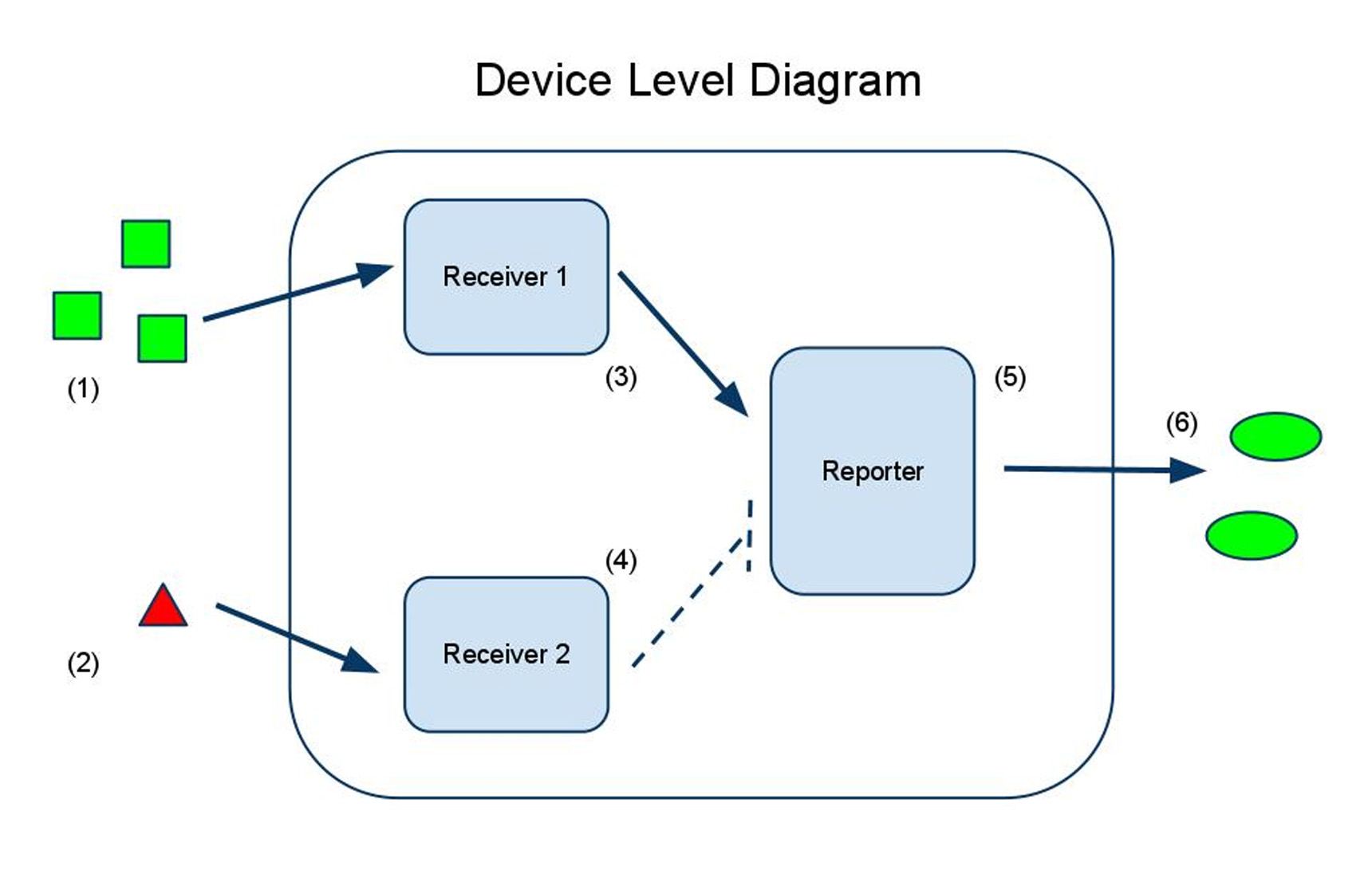Team:Stanford/Analog Sensor
From 2010.igem.org
(→Diagrams) |
|||
| Line 23: | Line 23: | ||
| - | [[Image: | + | [[Image:Slide12.jpg| 700px | caption]] |
Input A '''(1)''' binds to a promoter, causing synthesis of a kinase '''(3)''', which phosphorylates the transcription factor '''(5)''', allowing it to bind to a promoter upstream of the gene coding for the output protein '''(6)'''. | Input A '''(1)''' binds to a promoter, causing synthesis of a kinase '''(3)''', which phosphorylates the transcription factor '''(5)''', allowing it to bind to a promoter upstream of the gene coding for the output protein '''(6)'''. | ||
Revision as of 23:51, 27 October 2010

| Home | Project | Applications | Modeling | Parts | Team | Notebook |
The Kinase-Phosphotase Sensor
Overview
Our second sensor design responds to a range of ratios, varying the intensity of the output to indicate the ratio of input chemicals.
One of the input chemicals leads to the phosphorylation of a transcription factor, while the other leads to its de-phosphorylation. Only the phosphorylated version of the transcription factor can activate the promoter upstream of the output protein. Visit our modeling page to read about how the ratio of the two inputs can be computed as a linear function of the output.
uses a transcription factor regulated by a kinase/phosphotase pair. In this system, the phosphorylated form of the transcription factor causes transcription of a gene coding for our output protein. The production of the transcription factor is under the control of a constitutive promoter, which maintains a basal concentration. The kinase that acts on the transcription factor is under the control of a promoter positively regulated by A. A phosphotase is similarly controlled by input B. By testing the concentration of output protein in relation to various concentrations of input chemicals, we plan to create an algorithm that will allow us to work backwards from a given concentration of output protein to deduce the ratio of the original concentrations of input chemicals.
Read about our other sensor or return to our project page.
Diagrams
 Input A (1) activates receiver 1 (3), which activates the reporter (5), causing synthesis of the output protein (6).
Input A (1) activates receiver 1 (3), which activates the reporter (5), causing synthesis of the output protein (6).
Input B (2) activates receiver 2 (4), which inactivates the reporter (5), decreasing synthesis of the output protein (6).
 Input A (1) binds to a promoter, causing synthesis of a kinase (3), which phosphorylates the transcription factor (5), allowing it to bind to a promoter upstream of the gene coding for the output protein (6).
Input A (1) binds to a promoter, causing synthesis of a kinase (3), which phosphorylates the transcription factor (5), allowing it to bind to a promoter upstream of the gene coding for the output protein (6).
Input B (2) binds to a promoter, causing synthesis of a phosphotase (4), which removes the phosphate group from the transcription factor (5), inactivating it and preventing it from binding to the promoter upstream of the output protein (6).
 "
"